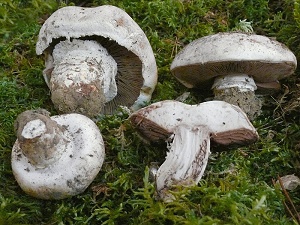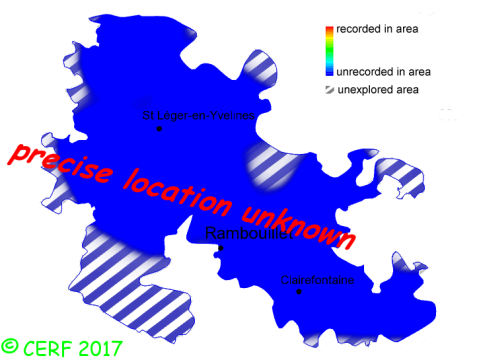| Agaricus maleolens F.H. M°ller |
|
|
|
|
|
|
The cap is whitish to brown ochre, convex, fleshy; its margin is bearing hanging veil remains. The cap surface is smooth or slightly scaly, not viscid nor sticky. The stem is whitish to ochre, tapering towards base, with a large ascending membranous sheathing ring, white, soon torn. The flesh is pinkish; its taste is mild to unpleasant; the odour is unpleasant, of fish; its texture is fibrous. The gills are free, crowded . The spore print is dark brown. This species is saprophytic. It grows on the ground, in parks, thickets. The fruiting period takes place from June to November.
Distinctive features : Cap with a soft superficial layer; veil remains at the margin; stem with sheathing ring; unpleasant odour of fish Agaricus maleolens is rare and confined in the forest of Rambouillet, and is rare, more generally speaking . | ||
|
page updated on 14/01/18

